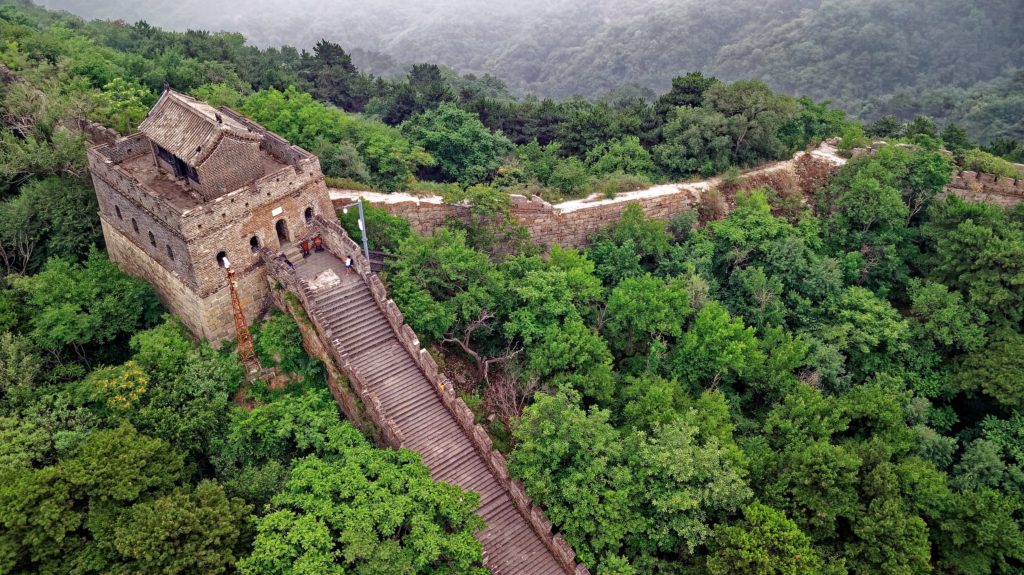Using Drones to Inspect and Repair the Great Wall of China

Known as one of the Seven Wonders of the Middle Ages, The Great Wall of China truly is a wondrous sight. Building of the wall began around 2,00 years ago, mostly during the Ming dynasty, as a way of protecting the Chinese from nomadic warriors. It is a series of stone, wood, brick, and earthen fortifications. It averages 20-30 feet tall, with it’s highest point reaching 46 feet. The wall runs 5,500 miles from Hushan, Liaoning in the east to Jiayuguan Pass, Gansu in the west. Though it has been proven that being able to see the Great Wall from space is just a myth, it is still seen by over 10 million tourists yearly. However, what these visitors are able too see of the wall is drastically declining.
Currently the only parts of the wall left standing is the sections built during the Ming dynasty. Almost all sections built prior to that have been destroyed. It is estimated that about 30% of the Ming era wall has also been destroyed due to human and natural erosion. The wall is crumbling. The Chinese government enacted protective regulations for the wall in 2006, and now they are receiving further help by a very modern technology. Chinese authorities in conjunction with Intel’s drone division are ready to take on conservation efforts for The Great Wall of China.
While Intel has become famous for their aerial show drones, Shooting Star, for this project they will be using their commercial drone, The Falcon 8+. According to their website, the Falcon 8+ drone “Is a professional, unmanned aerial vehicle with a patented V-shaped design and features best-in-class safety and advanced performance ideal for inspection and close mapping.” It has a carbon fiber chassis with four top mounted rotors running along both sides of it’s “V” shaped body. It carries a camera that captures high definition 3-D images, as well as redundant battery capacity. The drones are controlled by a device called the Intel Cockpit Controller, which resembles a medium sized gaming console with a single joystick and monitor.
Many areas of the wall in need of repair are difficult to gain access to, especially without causing further damage. This is what makes the Falcon 8+ the perfect tool for this job. The drone is able to effortlessly fly into theses hard to reach places without coming in contact with the wall. With it’s superior camera, the drone collects data on the wall and it’s surrounding area. This data is then used to create comprehensive 3-D maps of the area. These maps are used to first create a plan of support structures to surround the area to be restored. Lastly the data is used to pinpoint the exact types of restoration needed.
The Great Wall of China has long been considered one of the most technologically engineered structures of it’s time. The fact that any of it still stands today just reaffirms that notion. It is amazing to see how a modern form of technology, a drone, is being used to conserve this ancient feat of engineering.
|